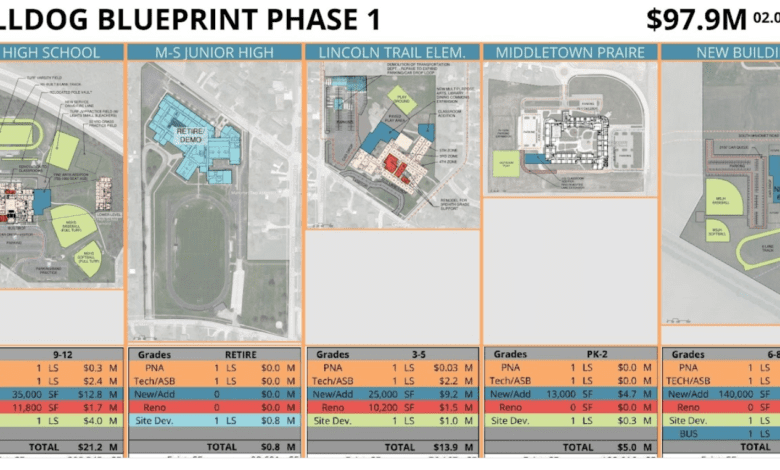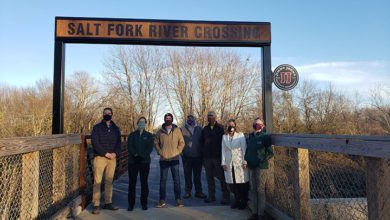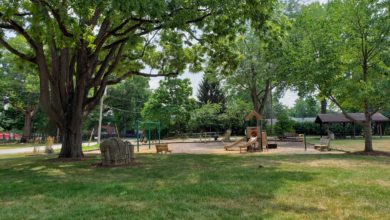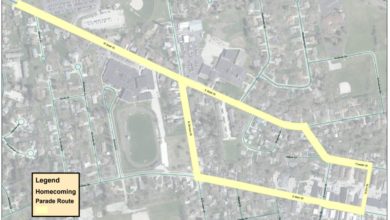Referendum discussion leads to vote to move ahead with recommended plan

By Taylor Castro
The Mahomet-Seymour School board voted to accept the Bulldog Blueprint recommendation on Tuesday (Feb. 22). A $97.9 million bond issue will appear on the ballot on June 28, 2022, after passing with a vote of 4-3 in favor.
After discussion at the meeting, the board also voted on adding a second question to the ballot for $50 million to construct an elementary school. The language of the questions would have to be chosen so they do not depend on one another. This motion did not pass with a vote of 3-4.
With Phase I of the project, the $97.9 million will be spent building a new Mahomet-Seymour Junior High School; demolishing the old junior high school; adding a 35,000 square feet fine arts addition, renovating 11,800 square feet where the band, choir, and art classrooms currently are (potential classrooms), providing about $2.4 million in tech upgrades, placing turf on the football, baseball and softball fields along with adding a new JV turf field on-site; adding 25,000 square feet onto Lincoln Trail Elementary and renovating 10,200 square feet of the current building; providing new playground equipment and surface, and spending $2.2 million on technology upgrades; Middletown Prairie will get a 13,000 square foot addition and an outdoor play area; and the bus barn will be moved to the east campus where the junior high is projected to be built.
According to the timeline, the junior high would open in the fall of 2024, and Phase I would be complete by the fall of 2025.
“The plan calls for all new classroom space to be a part of phase 1 (MSHS, LTE, MPE) – some space is gained via additions, while others are gained via reconfiguration of vacated rooms (band/choir/art at HS or Library at LTE),” BLDD Architect Damien Schlitt said in response to an email that asked about clarification on number of classrooms and timeline. “This is the scope identified as capacity upgrades.
“At (Lincoln Trail) – there is a classroom addition where we have identified a 5th-grade zone, the exact number of rooms in that addition are not identified in the plans and will require additional conversations with teachers to determine exactly what ends up in any of those areas.
“Capacity is more than just classroom seats – that includes physical education spaces and athletic fields, as well as other site work such as traffic flow and parking expansions.”
Phase II is estimated to cost an additional $30.5 million. The district hopes to be able to use available sales tax dollars at that time.
“Phase 1 includes scopes of work necessary to house our current and projected enrollment at all of our buildings,” Schlitt said. “Phase 2 work is focused on infrastructure upgrades at those facilities – work which has been deemed less urgent to our community than having space. The exact “line in the sand” for this will be very much reliant upon the way that bids come in, and if we are able to complete additional work, currently identified as phase 2 work, or make refinements to the plan to solve our capacity/space issues to keep to our budget.”
Board member Colleen Schultz cited data from the Bulldog Blueprint survey on the Bulldog Blueprint, stating the addition of classroom and learning spaces consistently ranked as the highest priority with over 50% of people putting it first. The lowest-ranked item was re-turfing the fields, which was put last by 42% of survey takers.
All buildings are at capacity. A word cloud survey of the district’s staff consistently indicated the need for more space and smaller class sizes in order to better support the learning environment.
The Mahomet-Seymour Junior High requires the most immediate attention. There were suggestions to build a new high school and have the junior high take that building, but the project would cost more than possible right now. A new high school building could potentially be built in the future, but would require additional funds for the building and to purchase land.
“If we were to wait and build a high school in 10 years, we would have access to those [sales tax] funds. We would have access to the continued growth in our EAV. We would have access to the funds that we will get from this TIF district out here that’s going to expire in 10 years,” board member Ken Keefe said.
The sales tax funds are currently being used to finish paying for the Middletown Prairie Elementary building over the next 10 years.
All board members and some community members shared their opinion on the factors that go into this project. The need for more space to accommodate the growing population has been a concern for years. Looking at the long-term growth, the board was unsure of how to solve the problem immediately, as well as what will happen in the future if the number of students continues to increase and the schools run out of space quicker than expected.
The language of the Bulldog Blueprint that will appear on the ballot likely will be discussed at the board’s next regular meeting on March 21.




